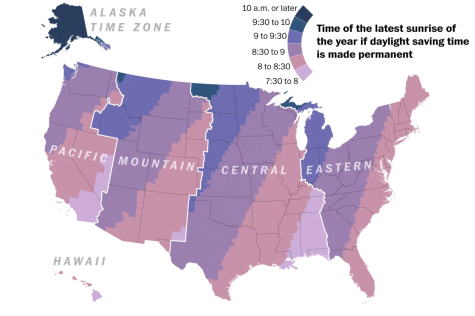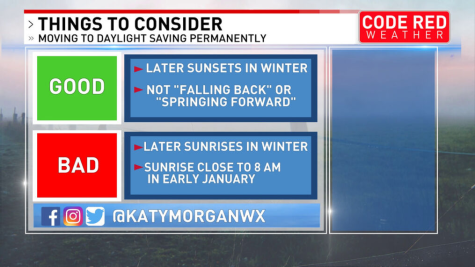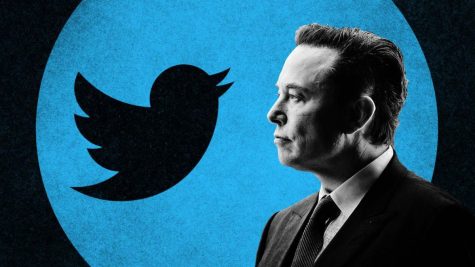DST is now permanent
This change has been called the Sunshine Protection Act and will go into effect in 2023.

DST or Daylight Savings Time originally began in the U.S on March 19th, 1918. During this time the first world war was taking place and many other countries themselves had already implemented a DST of sorts a year earlier in their nations. America finally adopted this a year later, so that America would cut artificial lighting use so that the troops could conserve fuel for that war. The US, however, didn’t standardize this until 1966, when it passed the Uniform Time Act.
Around 50 years ago in 1974, America was in a similar situation where they were in constant DST Time. During this time, America was facing another energy crisis and decided to experiment/try out making DST permanent for around two years. Many Americans hated it. They disliked that they woke up and had to get to work and school even before the sun began to rise. The sour taste it left in the mouth of many went on to complain to the government. There were series of early morning traffic fatalities, eventually leading to Congress reverting their action just 10 months into the experiment. Besides this however, all of this didn’t even help much with the energy crisis.
On Tuesday, March 15 of 2022 the Congress voted unanimously to make DST time permanent again. This was promoted by supporters that wanted to get rid of the changing of the clocks two times year round, they also wanted to advocate for brighter afternoons, and more economic activity. The name for this action is the ‘Sunshine Protection Act’, it’s not confirmed whether Biden supports this act, but the Senate plans to make this permanent starting in 2023.

Now that permanent DST may be coming upon us, let’s look at some bad things that could result from this decision. As before in the 1970’s, this could cause a slight increase in car crashes due to the time that people would be getting up. Another thing noted from the previous permanent DST that had occurred was that there was a rise in strokes and heart attacks after the time change. Overall, there are some serious repercussions that could happen if this act were to be implemented. Of course, once people get use to the time change again it won’t really be much of a problem anymore, but there’s no telling how long that may take.
Maintaining the same time all year could remove the slight uptick in car accidents and workplace injuries that occur in the days following a clock change.
— U.S. Department of Transportation
Though there are some bad things that could happen, there are many good things that the bill states will also come from this. The bill states that this would reap health and economic benefits. It would reap economic benefits because there would be more customers at waning hours in the day, and would also help prevent sleep disturbances from the sudden schedule changes.
Overall, the permanent DST sounds like it could be a good thing, no one likes having to change their routine and clocks twice a year, so at the very least that is one good thing that comes from this. One obviously bad thing that would come if this bill were to be implemented in 2023 is that people would always be losing one hour of sleep, but once they’re accustomed to the new schedule that might not be so much of a problem anymore. It’s hard to say if this will be a good or bad thing for the U.S, it has many benefits, but also many repercussions that could come with it.

"Success is not final, failure is not fatal: it is the courage to continue that counts."













